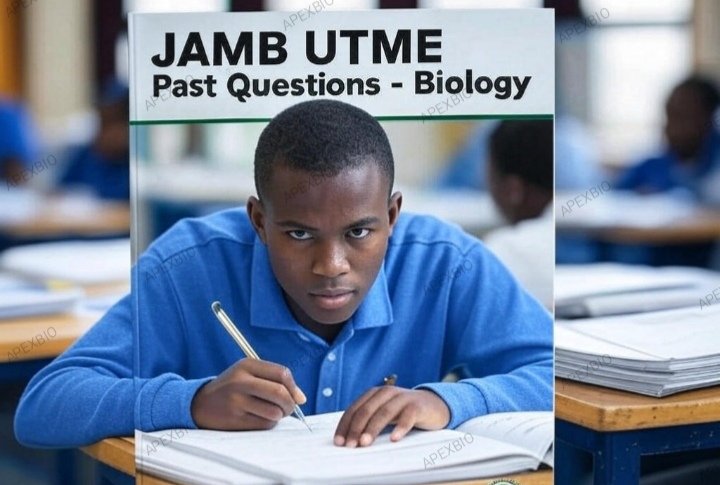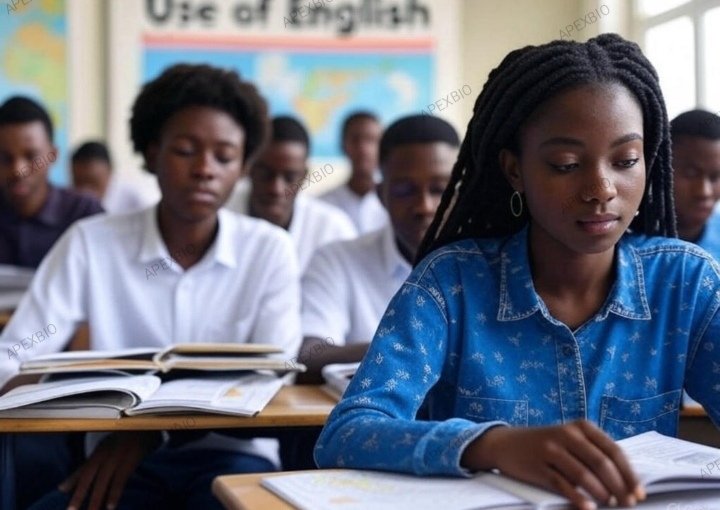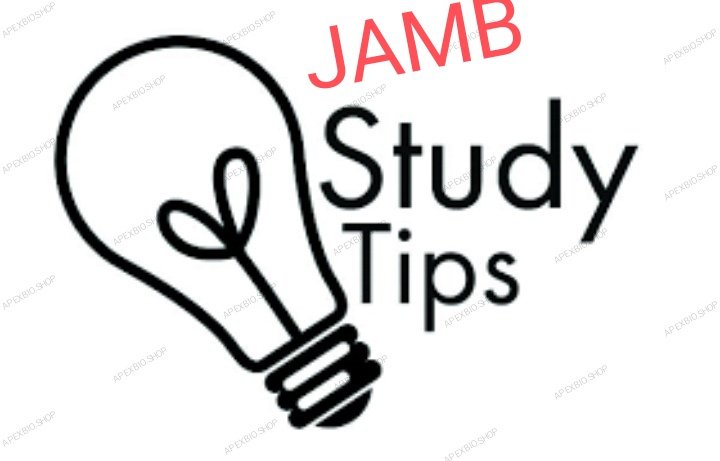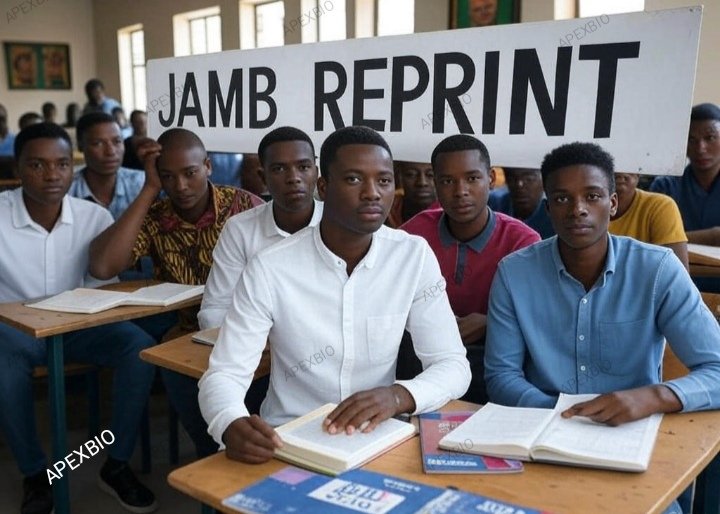Jamb Biology Past Questions
Biology is a subject taught in Nigerian secondary schools, mainly for students in the sciences. It deals with the study of living things, including their structure, functions, and interactions with the environment. Biology is an important subject for students who want to pursue courses like Medicine, Nursing, Pharmacy, Biochemistry, or Agriculture in the university. It is also a compulsory subject for science students in exams like WAEC, NECO, and JAMB, as it provides the foundation for these fields. These pasts repeat themselves yearly so all candidates writing biology should ensure that they study Jamb Biology Past Questions.
Jamb Biology Past Questions
Section A
- The basic unit of life is the
(a) Atom
(b) Molecule
(c) Cell
(d) Organ
The correct answer is: (c) Cell
- The genetic material found in most living organisms is
(a) RNA
(b) DNA
(c) Protein
(d) Lipid
The correct answer is: (b) DNA
- The process by which green plants make their own food is called
(a) Respiration
(b) Photosynthesis
(c) Fermentation
(d) Digestion
The correct answer is: (b) Photosynthesis
- The powerhouse of the cell is the
(a) Nucleus
(b) Ribosome
(c) Mitochondrion
(d) Chloroplast
The correct answer is: (c) Mitochondrion
- Which of the following is a characteristic of all living things?
(a) Movement
(b) Reproduction
(c) Photosynthesis
(d) Flight
The correct answer is: (b) Reproduction
- The organ responsible for pumping blood in humans is the
(a) Liver
(b) Lungs
(c) Heart
(d) Kidney
The correct answer is: (c) Heart
- In human beings, digestion begins in the
(a) Stomach
(b) Small intestine
(c) Esophagus
(d) Mouth
The correct answer is: (d) Mouth
- Which of these is a vertebrate?
(a) Earthworm
(b) Spider
(c) Fish
(d) Snail
The correct answer is: (c) Fish
- The function of red blood cells is to
(a) Fight infections
(b) Transport oxygen
(c) Produce enzymes
(d) Remove waste
The correct answer is: (b) Transport oxygen
- The main excretory product in humans is
(a) Oxygen
(b) Carbon dioxide
(c) Urea
(d) Nitrogen
The correct answer is: (c) Urea
Section B
- The structural and functional unit of the kidney is the
(a) Alveolus
(b) Nephron
(c) Axon
(d) Artery
The correct answer is: (b) Nephron
- Which of the following is a sexually transmitted disease?
(a) Malaria
(b) Tuberculosis
(c) Syphilis
(d) Cholera
The correct answer is: (c) Syphilis
- The largest organ in the human body is the
(a) Brain
(b) Liver
(c) Skin
(d) Heart
The correct answer is: (c) Skin
- Which blood group is considered the universal donor?
(a) A
(b) B
(c) AB
(d) O
The correct answer is: (d) O
- The process of cell division that produces gametes is called
(a) Mitosis
(b) Meiosis
(c) Binary fission
(d) Budding
The correct answer is: (b) Meiosis
- In plants, water is transported from the roots to the leaves through
(a) Phloem
(b) Xylem
(c) Stomata
(d) Cortex
The correct answer is: (b) Xylem
- The green pigment in plants responsible for photosynthesis is
(a) Hemoglobin
(b) Myoglobin
(c) Chlorophyll
(d) Melanin
The correct answer is: (c) Chlorophyll
- The process by which organisms maintain a stable internal environment is called
(a) Metabolism
(b) Homeostasis
(c) Digestion
(d) Respiration
The correct answer is: (b) Homeostasis
- The function of the large intestine in humans is to
(a) Absorb nutrients
(b) Store bile
(c) Absorb water
(d) Produce enzymes
The correct answer is: (c) Absorb water
- Which of these is a fungal infection?
(a) Ringworm
(b) Typhoid
(c) Polio
(d) Tuberculosis
The correct answer is: (a) Ringworm
Section C
- The female reproductive organ in a flower is the
(a) Stamen
(b) Ovary
(c) Petal
(d) Sepal
The correct answer is: (b) Ovary
- In humans, fertilization takes place in the
(a) Uterus
(b) Ovary
(c) Fallopian tube
(d) Cervix
The correct answer is: (c) Fallopian tube
- Which of the following is not a characteristic of mammals?
(a) They have hair or fur
(b) They lay eggs
(c) They produce milk
(d) They are warm-blooded
The correct answer is: (b) They lay eggs
- An example of a prokaryotic organism is
(a) Virus
(b) Bacteria
(c) Fungi
(d) Protozoa
The correct answer is: (b) Bacteria
JOIN US ON SOCIAL MEDIA
Twitter@apexbio24
- The part of the brain responsible for coordinating movement is the
(a) Cerebrum
(b) Medulla oblongata
(c) Cerebellum
(d) Hypothalamus
The correct answer is: (c) Cerebellum
- Which of the following is a biotic factor in an ecosystem?
(a) Soil
(b) Temperature
(c) Plants
(d) Water
The correct answer is: (c) Plants
- The process by which water is lost from the leaves of plants is called
(a) Transpiration
(b) Photosynthesis
(c) Respiration
(d) Osmosis
The correct answer is: (a) Transpiration
- The hereditary material in a cell is found in the
(a) Mitochondria
(b) Nucleus
(c) Ribosome
(d) Cytoplasm
The correct answer is: (b) Nucleus
- A person with a deficiency of vitamin D is likely to suffer from
(a) Rickets
(b) Scurvy
(c) Beriberi
(d) Anemia
The correct answer is: (a) Rickets
- Which of the following is an example of a carbohydrate?
(a) Glucose
(b) Protein
(c) Enzyme
(d) Fat
The correct answer is: (a) Glucose
Section D
- The smallest blood vessels in the body are called
(a) Veins
(b) Capillaries
(c) Arteries
(d) Lymph vessels
The correct answer is: (b) Capillaries
- The main function of white blood cells is to
(a) Transport oxygen
(b) Clot blood
(c) Fight infections
(d) Store energy
The correct answer is: (c) Fight infections
- Which of these diseases is caused by a virus?
(a) Malaria
(b) Influenza
(c) Cholera
(d) Tuberculosis
The correct answer is: (b) Influenza
- The structure in the cell responsible for protein synthesis is the
(a) Mitochondria
(b) Ribosome
(c) Golgi apparatus
(d) Lysosome
The correct answer is: (b) Ribosome
- The study of interactions between organisms and their environment is called
(a) Physiology
(b) Taxonomy
(c) Ecology
(d) Genetics
The correct answer is: (c) Ecology
- The smallest unit of classification in biology is the
(a) Phylum
(b) Order
(c) Genus
(d) Species
The correct answer is: (d) Species
- Which organ in the human body filters blood to produce urine?
(a) Liver
(b) Kidney
(c) Lungs
(d) Heart
The correct answer is: (b) Kidney
- The type of reproduction that involves only one parent is called
(a) Sexual reproduction
(b) Asexual reproduction
(c) Pollination
(d) Fertilization
The correct answer is: (b) Asexual reproduction
- A group of similar cells performing the same function is called a
(a) Tissue
(b) Organ
(c) System
(d) Organism
The correct answer is: (a) Tissue
- The main function of the small intestine is to
(a) Absorb nutrients
(b) Digest proteins only
(c) Store bile
(d) Produce red blood cells
The correct answer is: (a) Absorb nutrients






